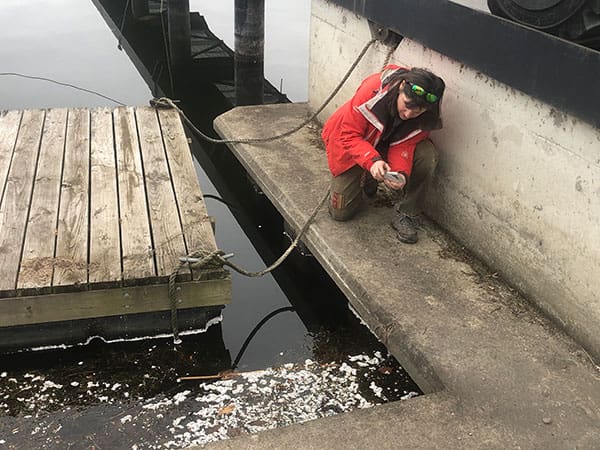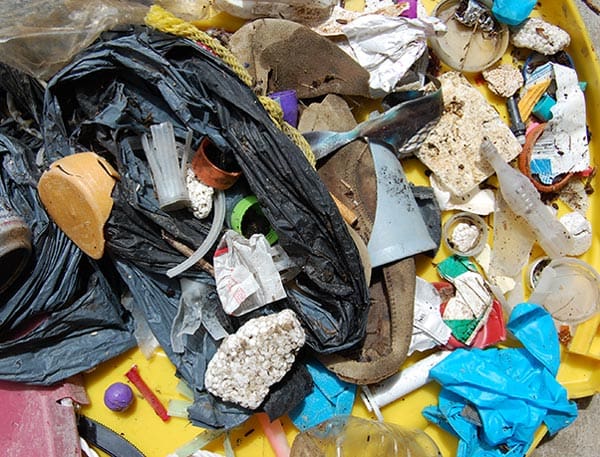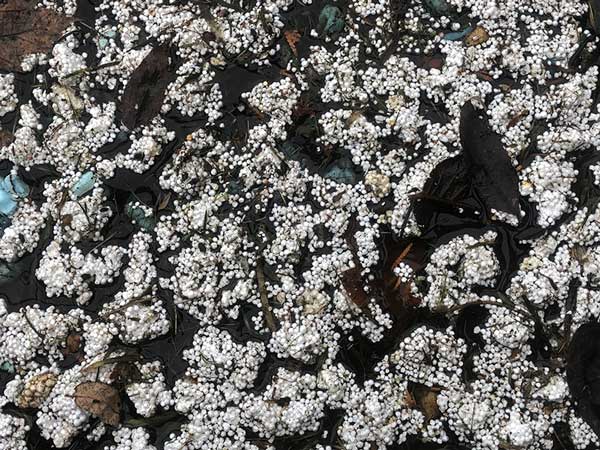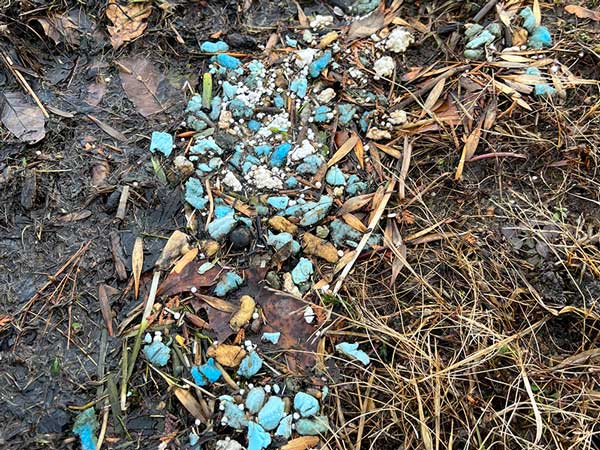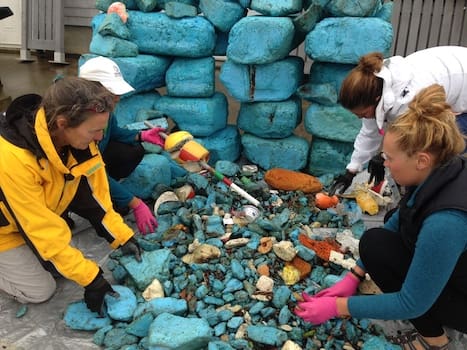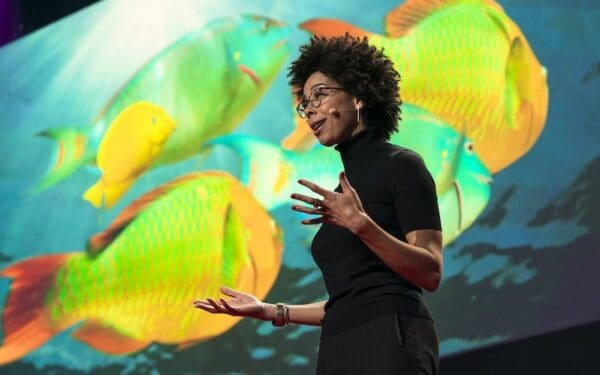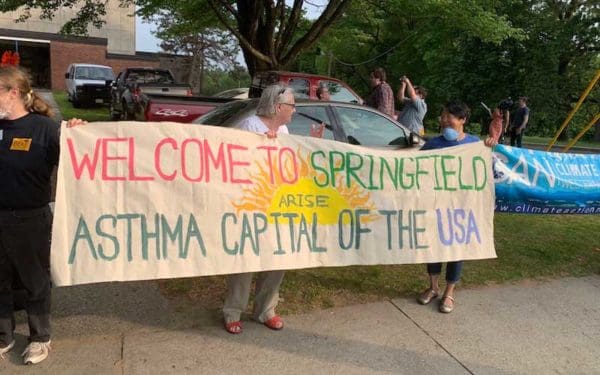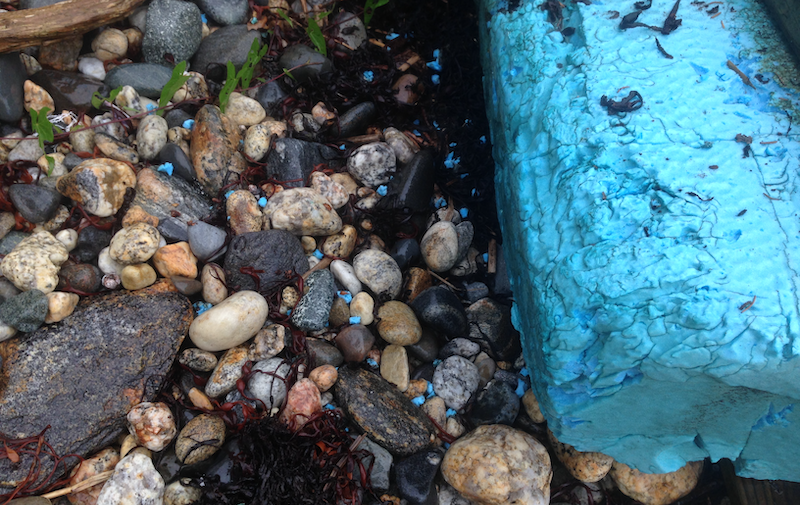
When dock foam blocks break down or the tiny loose beads spill out, it is nearly impossible to collect all the pieces, leaving us to deal with the risks it poses to our environment, wildlife, and human health for decades. Photo: Rozalia Project
I’ve sailed the waters of the Northeast for decades, from the Gulf of Maine to Connecticut’s Mystic River to Vermont’s Lake Champlain. One of the most dramatic changes I’ve noticed over the years is how much more trash floats in the water and washes up on beaches: balloons, fishing gear, food wrappers, cigarette butts, plastic film, plastic bottles, and foam from food containers and coolers.
But even as I’ve seen all kinds of trash on the rise, one type stands out more than others: the bright blue and white foam often used to support docks. I’ve worked with volunteers to clean up hundreds of blocks of broken dock foam – some the size of clothes dryers ― that washed ashore on remote islands in Maine. And I’ve scooped up tens of thousands of tiny white beads of dock foam from Lake Champlain’s beaches after a storm.
Made of expanded polystyrene (foam), commonly known as Styrofoam, this dock foam pollution isn’t just ugly. It harms the wildlife that eats it. It gets into the fish we eat and contaminates our drinking water. Moreover, it’s made from fossil fuels, which means its manufacture contributes to climate change. And the chemicals that go into dock foam – such as styrene, benzene, and ethylbenzene – can leach out and act as toxins that harm the health of people and animals.
It’s time to stop polluting our waters with dock foam.
Plastic Foam Pollutes Vermont’s Lakes and Rivers
Polystyrene foam is one of the top items of marine debris littered on shorelines, beaches, and surface water worldwide, including Lake Champlain. The Rozalia Project’s 2014 study of Lake Champlain beaches showed that foam was the most abundant pollution in the sand, followed by hard plastic pieces and thin plastic film.
Most people picture coffee cups, take-out trays, and egg cartons when they think of polystyrene foam. But it’s also used for coolers, worm containers, building insulation – and boat and dock floatation. That’s because it’s cheap and widely available. And, in the case of boats and docks, it floats.
The problem, however, is that polystyrene foam is brittle. It easily breaks into fragments when exposed to the sun, wind, waves, ice, impacts from driftwood, and wildlife. And all of those fragments add up to a lot of pollution. During their annual Source to Sea Cleanup in 2018, Connecticut River Conservancy volunteers removed the equivalent of 170 bowling balls worth of dock foam from the Connecticut River.
And, like other plastics, polystyrene foam never goes away. Between 2015 and 2018, researchers from SUNY Plattsburgh discovered microplastic foam in St. Albans, Ticonderoga, Plattsburgh, Burlington, and Vergennes wastewater. They also found it in the stomachs and digestive tracks of birds, fish, and small aquatic insects (all part of the aquatic food web) from Missisquoi Bay in the north to Whitehall in the south.
Let’s Be Clear: Docks Are Not the Problem. It’s the Foam
Docks are a great way to access boats, go for a swim, fish, or just hang out by the water. Many docks on Vermont’s lakes, ponds, and rivers don’t use foam at all. Stilts or legs hold them above the water. Other docks float on air-filled barrels or blocks.
The docks that pollute our lakes and rivers use exposed foam blocks (called “unencapsulated foam”) or floats filled with loose white foam beads. Docks with unencapsulated foam are likely older or abandoned, as many dock manufacturers no longer sell that product.
When these older foam blocks break down, or the tiny loose beads spill out, it is nearly impossible to collect all the pieces. That means we are stuck with that pollution – and the risks it poses to our environment, wildlife, and human health – for decades to come.
Vermonters Banned Polystyrene Foam Food Containers. Now We Need to Take the Next Step
Vermonters understand the need to reduce plastic pollution and protect our wildlife and human health. Your support led to the landmark Single-Use Products Law, passed in 2019. This law bans polystyrene foam food and beverage containers (cups, trays, take-out containers, and egg cartons), which will cut the foam debris in our lakes, rivers, fields, and forests.
That law is a significant first step, but other sources of polystyrene foam still need to be regulated. Dock foam must be at the top of the list.
That’s why CLF is partnering with other advocacy organizations – including the Lake Champlain Committee and the Connecticut River Conservancy – and Vermont legislators. Together, we are pushing for a bill to prohibit the sale of unencapsulated polystyrene foam floatation and loose-bead foam-filled flotation in docks, mooring buoys, and other structures on Vermont’s lakes, ponds, and rivers.
The proposed bill will also require that docks be maintained and repaired to prevent polystyrene foam from leaking and disintegrating into the water. And any existing unencapsulated foam and loose bead foam floats must be removed and properly disposed of within two years after the bill’s passage.
Five other states have already passed legislation regulating polystyrene foam in floating docks. Let’s make Vermont the sixth.
What Can People Do Now?
First, let your state representatives know that you support the bill to ban dock foam.
Second, if you have a dock, check if the floatation is unencapsulated foam. If it is, make plans to switch it out for a cleaner, safer alternative. If you don’t own a dock but see foam pollution, contact me at jsilverman@clf.org or connect through Instagram at @lakekeeperjulie to report what you see. If possible, take photos and note the location.
Together, we can end this toxic pollution and create cleaner and healthier water for swimming, fishing, paddling, and wildlife.

